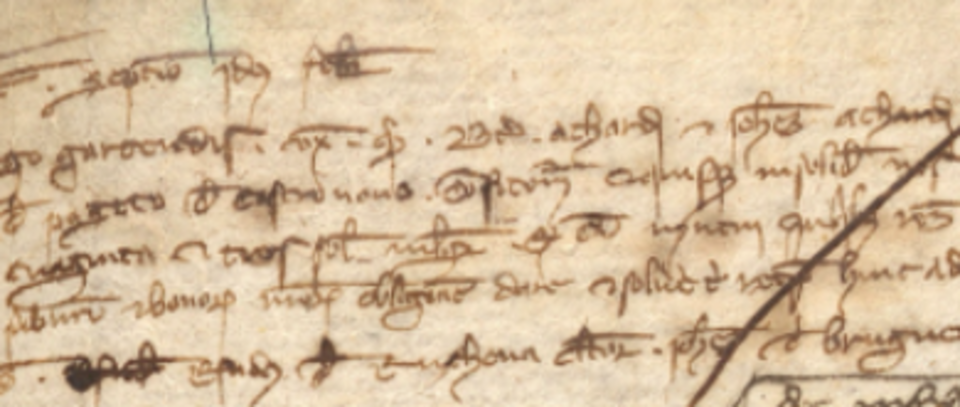Women and markets
The role of women in medieval economic life is notoriously under-researched. The idea of the economically immature woman, whose place was at the hearth, still dominates. This image dates back to the 19th century and has little to do with the conditions of the Middle Ages. There is an urgent research desideratum here. The project carries out basic research in the analysis of documents on the micro-level of medieval economic life, such as notarial records, account books from women's convents or municipal debt books. We are working together with, among others, the project to research the Klosterneuburg holdings of Martin Haltrich and Christina Jackel, led by Eva Schlotheuber (Düsseldorf), Stefan Müller (Vienna), Jeffrey Hamburger (Harvard).
The role of women in pre-modern economics
The project is dedicated to women as lenders, debtors and decision-makers in the financial markets of Montpellier in the 13th and 14th centuries. For this purpose, notary registers will be examined and a database (Les femmes dans l ́économie de Montpellier médiévale = FEM) will be created to provide an overview of women's activities.
Account books of medieval women's convents
The account books from the women's convents in Kirchheim unter Teck and Klosterneuburg near Vienna are a real stroke of luck for historical research. In addition to information about the various trading partners of the convent women, such as farmers or craftsmen, the sources also provide details, such as the wages of a convent carter. The account books provide insights into the everyday life and economic management of a medieval community of women.
Projects
Bachelor thesis by Selma Korbach
“The account book of Barbara from Speyer”
The bachelor's thesis attempts to reconstruct the expenditure on food (chapters on eggs, fish, cuisine and victuals) for the Dominican convent of Kirchheim unter Teck by means of a quantitative evaluation of the data from the account book of Barbara von Speyer and to draw conclusions about the nuns' standard of living on the basis of these. For this purpose, the transaction data from the partial transcription will first be transferred chapter by chapter into several Excel tables, which will provide a better overview and facilitate the data evaluation. In a second step, the respective chapters are then evaluated separately. And finally, a cross-chapter analysis takes place. The results of the evaluation are embedded in the historical context, especially in the dispute between the monastery and its patron, and in the current research discussion.
Study on the diet of the Kirchheim nuns
“Stockfish, honey, goose meat and saffron. Study on the diet of the Kirchheim nuns according to the account book of Barbara von Speyer (1481-85)”.
by Julia Petar Kevrić, Verena Weller, Selma Korbach, Annette Kehnel, Maria-Magdalena Rückert.
The account book of the Schaffnerin Barbara von Speyer lists the income and expenditure of the Dominican convent of St. Johannes Baptista in Kirchheim unter Teck for the years 1481 to 1485. In addition to information about the various trading partners of the convent women such as farmers, winegrowers or craftsmen, the source also provides details such as the cost of a new window in the refectory or the wages of a convent carter. The source provides insights into the everyday life and economic management of a medieval community of women. In the contribution presented here, we concentrate on the expenditure on food, especially fish, fruit, meat or spices (fol. 75r to 86v) and thus on questions concerning nutrition, the cost of living and the standard of living in a Swabian women's monastery.
Paper by Annette Kehnel and Maria-Magdalena Rückert
“The Account Book of Barbara of Speyer (1478 – 1486): Selection transcription of the Kirchheim account book of Barbara of Speyer – Hauptstaatsarchiv Stuttgart A 493 Bü 1”
The paper presents a partial transcription of the account book of Barbara von Speyer, of Kirchheim unter Teck, in the years 1478 to 1486. It offers insights into the daily life of women living in a Dominican community in southern Germany. Barbara, who was responsible for keeping the accounts, carefully listed the income and expenditure of the community budget. We learn about the costs of eggs, fish, wine, butter, fruit and vegetables, etc., but also about luxury goods such as furs or expensive spices like saffron. Their accounts also provide information about the wages the nuns paid to their workers in the vineyards, to the carpenters or for transport and repair services.


